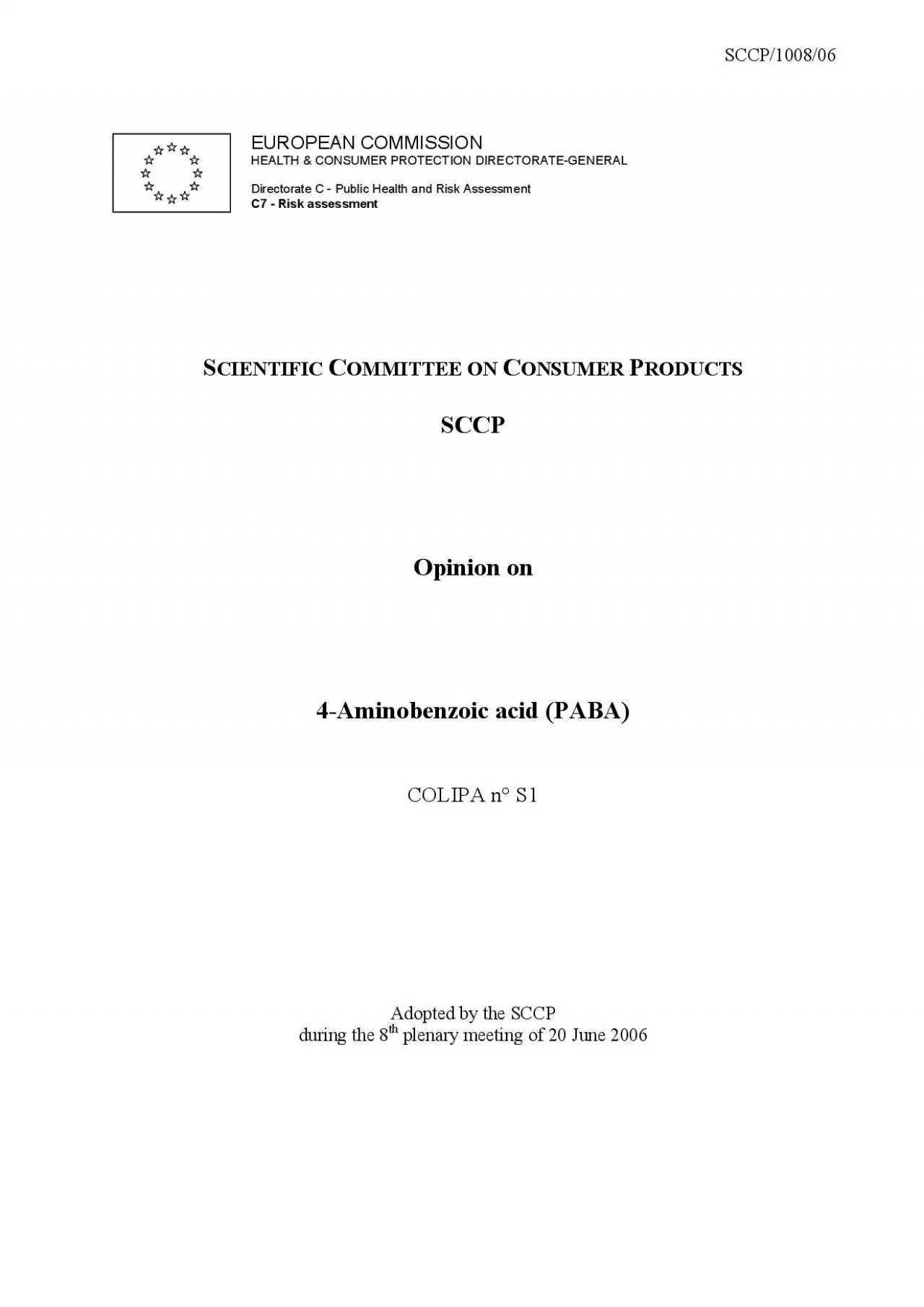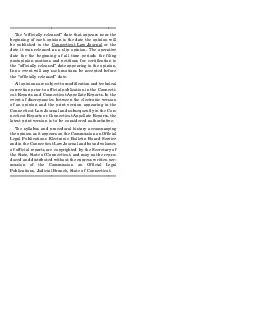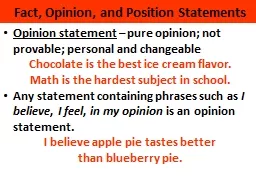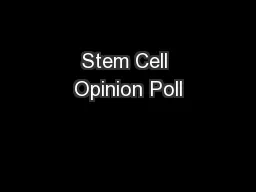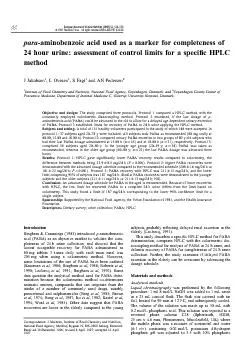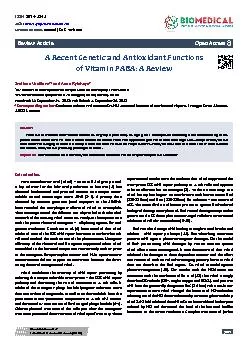PDF-SCCP/1008/06 Opinion on 4-Aminobenzoic acid (PABA) 1. BACKGROUND
Author : barbara | Published Date : 2021-01-05
SCCP100806 Opinion on 4Aminobenzoic acid PABA PABA or 4Aminobenzoic acid PABA is listed in Annex VII part 1 no 1 on the List of permitted UV filters that may be
Presentation Embed Code
Download Presentation
Download Presentation The PPT/PDF document "SCCP/1008/06 Opinion on 4-Aminobenzoic a..." is the property of its rightful owner. Permission is granted to download and print the materials on this website for personal, non-commercial use only, and to display it on your personal computer provided you do not modify the materials and that you retain all copyright notices contained in the materials. By downloading content from our website, you accept the terms of this agreement.
SCCP/1008/06 Opinion on 4-Aminobenzoic acid (PABA) 1. BACKGROUND : Transcript
Download Rules Of Document
"SCCP/1008/06 Opinion on 4-Aminobenzoic acid (PABA) 1. BACKGROUND "The content belongs to its owner. You may download and print it for personal use, without modification, and keep all copyright notices. By downloading, you agree to these terms.
Related Documents

